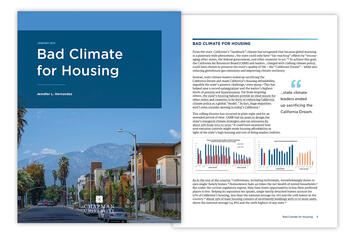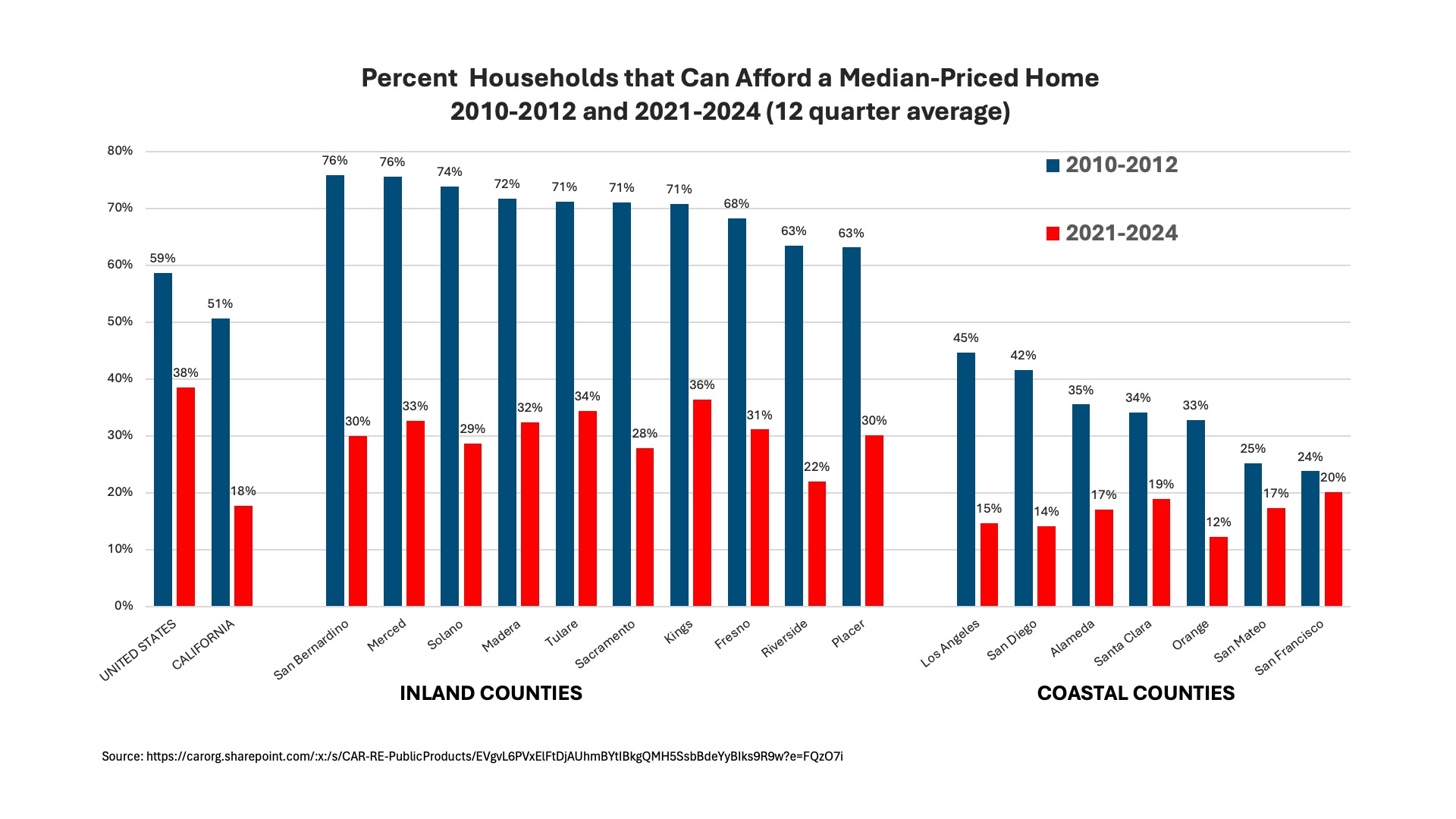
From the start, California’s “landmark” climate law recognized that because global warming is a planetary wide phenomena , the state could only have “far-reaching” effects by “encouraging other states, the federal government, and other countries to act.” To achieve this goal, the California Air Resources Board (CARB) and leaders, charged with crafting climate policy, could have chosen to preserve the state’s quality of life – the “California Dream” – while also reducing greenhouse gas emissions and improving climate resiliency.
Instead, state climate leaders ended up sacrificing the California Dream and made California’s housing affordability, arguably the state’s greatest challenge, even worse. This has helped spur a record outmigration and the nation’s highest levels of poverty and homelessness. Far from inspiring others, the state’s housing failures provide an ideal reason for other states and countries to be leery of embracing California climate policy as a global “model.” In fact, huge majorities won’t even consider moving to today’s California.
This rolling disaster has occurred in plain sight and for an extended period of time. CARB had six years to design the state’s inaugural climate strategies and cut emissions by about 10% from 2012 to 2020. It could have examined how new emission controls might erode housing affordability in light of the state’s high housing and cost of living market realities.
As in the rest of the country, Californians, including millennials, overwhelmingly desire to own single-family homes. Homeowners have 40 times the net wealth of rented households. But under the current regulatory regime, they have fewer opportunities to buy their preferred places to live. Belying its reputation for sprawl, single family detached homes account for 57% of California’s housing, less than the national average (61.1%) and the 10th lowest in the country. About 19% of state housing consists of multifamily buildings with 10 or more units, above the national average (14.8%) and the sixth highest of any state.
View/download the full report (PDF opens in new tab or window)
Jennifer L. Hernandez (author) has practiced land use and environmental law for 40 years, and leads Holland & Knight’s West Coast Land Use and Environmental Group. Ms.Hernandez is the longest-serving minority board member (23 years) of the California League of Conservation voters, was appointed by President Clinton to serve as a trustee for the Presidio National Park in San Francisco, serves on the board of directors for Sustainable Conservation, and teaches environmental justice at the University of Southern California Law School. Ms.Hernandez graduated with honors from Harvard University and Stanford Law School. She and her husband live in Berkeley and Los Angeles. The opinions and recommendations in this Article are the authors’ and should not be attributed to any other person or organization, to Holland & Knight, or to any client of the firm.













